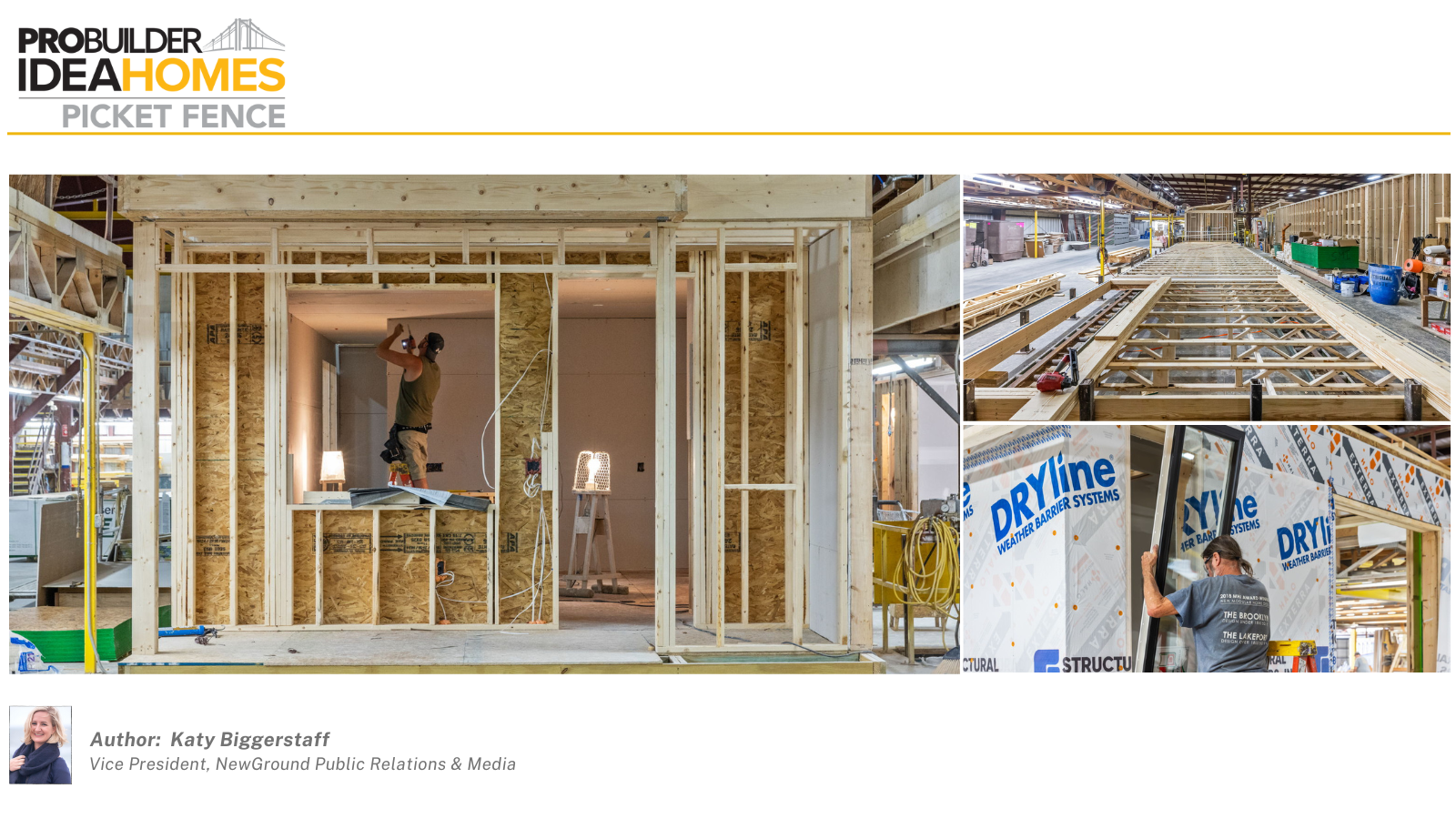A Responsibility to Sustainability: The Picket Fence’s Ambitious Goals

As the cost of new homes, energy, and maintenance continue to challenge builders and homebuyers nationwide, the housing industry needs fresh and sustainable solutions that lessen those burdens.
The Picket Fence Idea Home, a collaboration among Pro Builder Media, Dahlin Architecture | Planning | Interiors, the Housing Innovation Alliance, and The America at Home Study, presents a captivating solution that caters to the distinct desires of millennial “Trail Blazers” while solving some of the housing market’s most pressing dilemmas.
Results from Wave 3 of the America at Home Study, a unique look into consumer preferences and definitions of “home” during and after the pandemic, revealed that wellness features are highly valued among Trail Blazers.
Bolstered by that data and motivated by a desire to create lasting market change, the project team established a trio of lofty but attainable goals for The Picket Fence—each one requiring a comprehensive and integrated approach to design, construction, sustainability, and livability.
Three Goals for Sustainable Living
The Picket Fence Idea Home is three-level, two-unit home that was built using volumetric modular—an off-site construction method that demonstrates a higher level of livability, constructability, and sustainability than legacy home building methods and enabled the project to satisfy three specific identified goals:
- Reduce carbon emissions by 70% compared to typical new home construction. This benchmark is achieved by selecting alternative raw materials and products with lower environmental impacts to meet the U.S. Department of Energy’s (DOE) Net Zero Energy Ready Home (ZERH) Program standards;
- Generate 90% less construction waste than a typical new home build. By optimizing the construction process in a controlled factory environment, The Picket Fence significantly minimizes waste production;
- Build a higher-performance home that results in a healthier indoor environment. The home incorporates new systems and technologies in partnership with the DOE to ensure superior indoor air quality and overall occupant wellness.
Curiosity and Experimentation: The Engines of Eco-Innovation
The project team swiftly integrated into the factory production process at Structural Modular Innovations (SMI) to help achieve its three goals, resulting in a roadmap for the housing industry at large, regardless of market or price point.
“As a people- and planet-first solution, The Picket Fence is a testament to the power and effectiveness of the modular process,” said Eric Newhouse, vice president of innovation at SMI and factory liaison to EcoCraft Homes.
SMI’s volumetric modular production process streamlines construction practices, reduces construction time, limits embodied carbon and operational carbon emissions, and mitigates the use of non-renewable resources.
“This home can be a blueprint for factories nationwide that have the ability to get up to speed and scale ZERH homes that meet DOE standards.”
Among home’s cutting-edge systems and technologies is a next-generation central air conditioning and heating distribution (duct) system called RHEIA that is cost-effective, labor-efficient, and provides energy savings and consistently reliable indoor comfort.
The ductwork serves a new simplified zoning technology that equitably delivers airflow throughout the home and integrates with the electrical grid to reduce energy demand at peak use times.
In addition to their performance benefits, both technologies were chosen to help drive market transformation towards scalable, sustainable and replicable ZERH homes.
Meanwhile, a proactive indoor air and surface purification technology provided by ActivePure, installed at the air handler, delivers real-time healthier indoor air to help meet the project’s third goal of a healthier indoor environment.
The Picket Fence project team also collaborated with Tangible Materials, a software platform, and California State Polytechnic University-Pomona to conduct life cycle assessments to understand and minimize the carbon footprint of the project.
The collaboration measures both embodied carbon—the total greenhouse emissions generated during production, transportation and installation of building materials—and operational carbon, which pertains to the emissions produced during the building’s lifecycle.
A Vision for Building Beyond Today
The Picket Fence Idea Home offers a feasible and ready-to-implement approach that can improve housing affordability and lower energy and home maintenance costs while addressing environmental concerns.
The home demonstrates what’s possible in terms of scalable solutions that meet the increasingly urgent needs of today’s housing market. Designing The Picket Fence required significant foresight and a nimble, open-minded approach to home building.
Coming Soon: The finished Picket Fence Idea Home, complete with a real picket fence … and much more!


